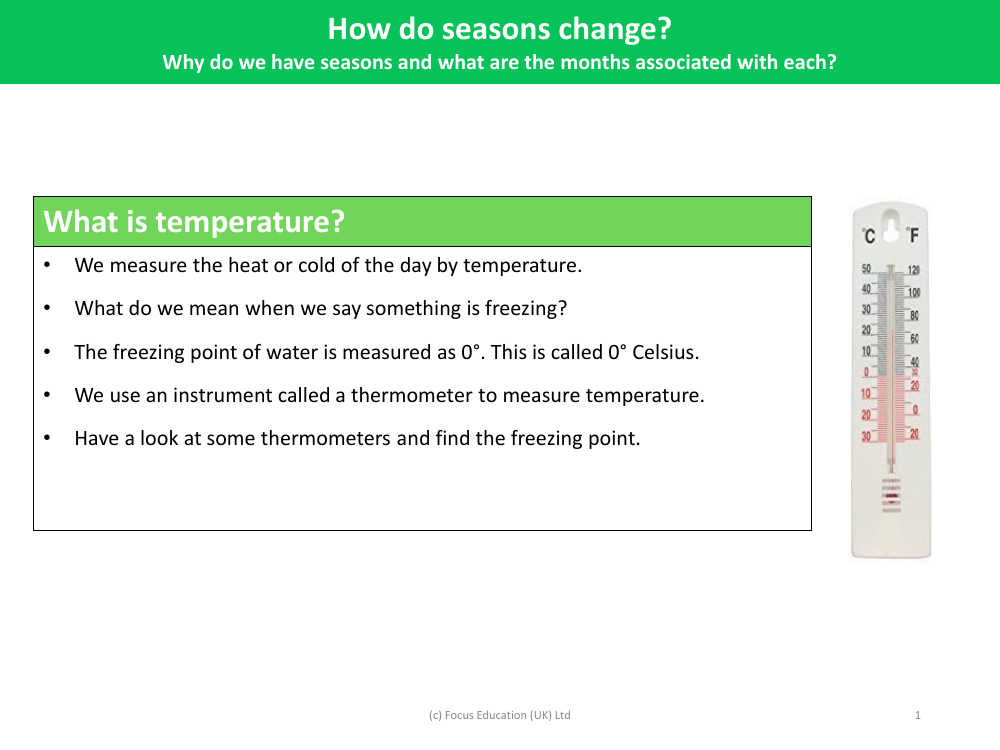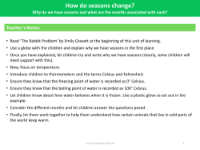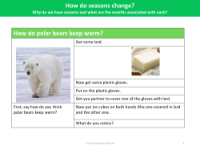What is temperature? - Seasonal Change - Year 1

Science Resource Description
Temperature is a measurement that tells us how hot or cold something is. In the context of daily weather, temperature indicates the warmth or chilliness of the day. When we describe something as 'freezing', we mean that it is very cold, often to the point of turning liquid into ice. The freezing point of water is a specific temperature, defined as 0 degrees Celsius (0°C). To measure temperature accurately, we use a device called a thermometer. By examining thermometers, we can identify the freezing point, which is marked at 0°C, and learn to read different temperatures for various weather conditions.
The changing of seasons is a fascinating natural phenomenon that occurs due to the Earth's tilt and its orbit around the Sun. Each season is associated with specific months of the year. The reasons behind why we experience seasons, along with the months that correspond to spring, summer, autumn, and winter, are topics that can be explored to understand the cyclical nature of our environment. As the Earth moves through its yearly cycle, the angle at which sunlight hits the planet changes, resulting in the distinct weather patterns and temperatures that characterise each season.







